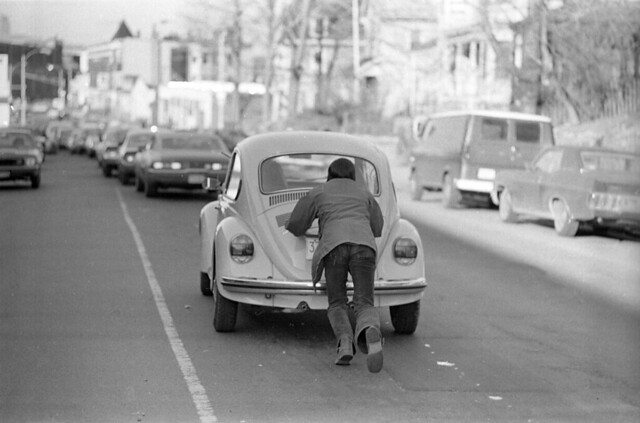Imagine you’re driving a car in Boston. You want to get somewhere quick so you decide to take Storrow Drive, the limited access highway along the Charles River. But as you approach Storrow Drive you see a sign informing you “PLEASE WALK CARS ON ACCESS AND EXIT RAMPS.” Now, you’ve been driving your car on city streets and will be driving your car on Storrow Drive, that’s what an automobile is designed to do, so you’d expect you’d also be able to drive between the two. But the sign says you must put the car in neutral and get out and push the vehicle, no matter how inconvenient and possibly dangerous that is.

Imagine now that you are a pedestrian walking the sidewalks of Boston. You decide to take a stroll along the Charles River along the scenic Esplanade. But when you get to the bridge crossing Storrow Drive, you a sign sign instruction pedestrians to “PLEASE BRACHIATE ACROSS THE BRIDGE.” Again, you might expect as a pedestrian that your means of locomotion should remain as walking for your entire journey, but for this part of your journey you must get in touch with your inner primate and swing by your arms across the bridge.
Sounds absurd? Insulting? Inefficient? Possibly injurious?
And yet, a bicyclist in the city of Boston hoping to connect to and from the Paul Dudley White Bike Path along the Charles River will see these signs on every bridge across Storrow Drive:

The Paul Dudley White Bike Path is in every the bicycle equivalent of Storrow Drive, a bicycle highway connecting Boston neighborhoods and the city to the suburbs. In a city where Mayor Marty “Car Guy” Walsh informs bicyclists that they are responsible for their own deaths “because cars are going to hit you,” the Paul Dudley White Bike Path is one of the few places in Boston where bicyclists of all ages and ability can feel confident and relaxed to bike without the risk of vehicular violence from automobiles. And yet, to merely get on or off this bicycle oasis, one must face the inconvenience and indignity of not being able to use a bike for what it was built to do. Speaking for myself, walking my bike for extended distances – especially up inclines – causes a soreness in my hips that I never get from riding a bike.
As Bostonians we must ask why certain forms of transportation are given the space to allow large numbers of vehicles to move at high speeds unobstructed (cars) while other forms of transportation must share limited spaces (pedestrians and bicyclists)? Why is the solution to conflicts of use to single out one form of transportation to be completely restricted from use on connecting routes? These questions must be resolved by improving facilities for bicyclists and pedestrians, reducing motor vehicle capacity where necessary, throughout the city. Until that time, riding one’s bike across the Storrow Drive bridges (yielding to pedestrians where necessary) remains and act of civil disobedience.
